From zari to chikan, traditional Indian embroidery and embellishments are used to create a contemporary, new story in this modern era. Discover the different types of Indian surface works like embroidery, appliqué & embellishments – precious things that seem to be from another time.

Hey gorgeous! Surface embellishments are an important factor to make your garment more appealing, isn’t it? Western culture had great influences on Indian clothing, but traditional surface works always held a place of pride for Indians. Specific types of Indian surface works not only represent their traditions but also their significance. They tell the stories of their communities with a choice of colors, motifs, stitches, and textiles used.
Last year, I learned about many of these types of Indian surface works from artisans in Kutch, Gujarat. I personally made a few samples and the experience was quite time-consuming just to get one proper patch of embroidery. The amount of detail and work that goes into making these samples is quite painstaking. In fact, I have always been fascinated by Indian surface works and their techniques.
Types of Indian Surface Works
Let us take a look at various types of Indian surface works that are beautiful and mind-blowing – from Gujarat to West Bengal, from Karnataka to Kashmir.
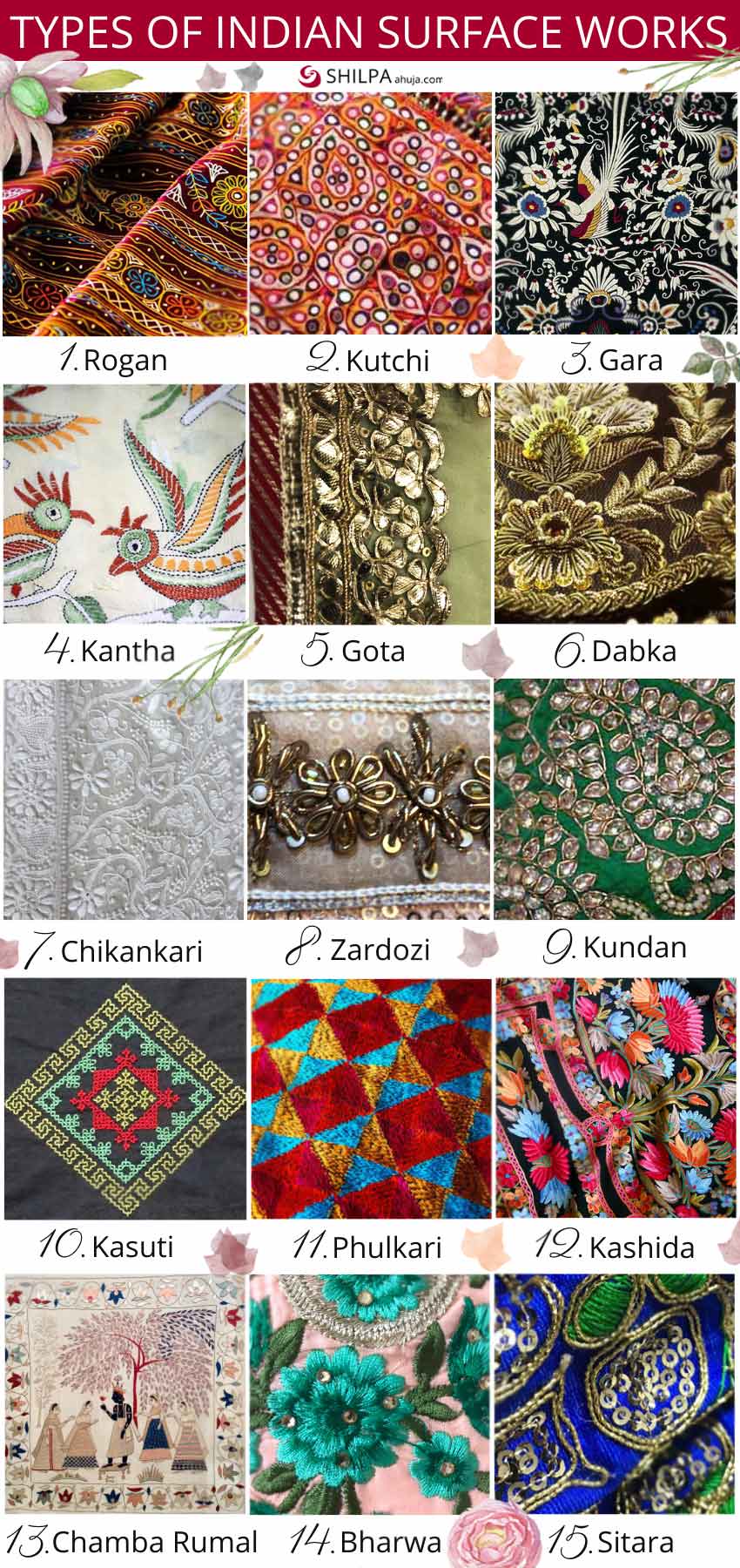
1. Rogan Art
Rogan is an ancient textile oil art and a rare craft of India, only made by the Khatri family of Nirona Village, Kutch, Gujarat. Originated in Persia, it came to Kutch around 300 years ago. In Persia, Rogan means oil. The paint is been made into a thick substance with the help of castor oil.
Rogan art is the type of Indian surface works done with vibrant natural colors and twisted motifs with a blunt needle that never comes in contact with the cloth. Traditionally, it was used to beautify the bridal clothing of the regional tribes. Nowadays, it is used in many products like sarees, dresses, jackets, wall pieces, handbags, and many more.
Ironically, being a Gujju girl, I didn’t know about this art until I went to Kutch during my industry visit at the house of Abdul Gafur Khatri’s family and they narrated me the story of this unique type of Indian surface work in detail.
When our PM Narendra Modi gifted a piece of this art in 2014 to then US President Barack Obama, this art got more popularity not only in India but also abroad. The “Tree of life” is the most popular painting inspired by traditional Persian designs. Young designers, like Vanshika Gupta and Salita Nanda, have got inspired by this art and added to their collections. With great care and thoroughness, beautiful borders of floral patterns are painted on the costumes and home decor.
2. Kutchi Work
Kutch is the “pride of Gujarat” known for its heritage crafts and embroidery. As we explore regions of Kutch, we can discover different types of Indian surface works in their original form and each community has its style of beautifying it. Originated from the Saurashtra and Kutch regions of Gujarat, Kutchi work is influenced by various communities of the Sindh region.
From mirror work or Abhla Bharat to appliqué work and patchwork, they also have Sindhi Taropa embroidery which is extensively used. We can see this type of Indian surface works in apparel and accessories as well as for home decors. During my Kutch visit, I visited some organizations like Shrujan, Kala Raksha, etc. to study Kutch embroideries. I learned about types of Indian surface works in detail there, and I got to know how vast my state of Gujarat is!
There are seven distinctive styles of Kutch embroidery, namely – Suf, Khaarek, and Paako, Rabari, Garasia Jat, and Mutava. Isn’t it interesting, that various traditional types of Indian surface work embroideries we can find in a single state? In Spring/Summer 2020 ready-to-wear collection, designer Ashish Gupta used vibrant mirror work (also called sheesha kaari) on heavily layered garments.
Delhi based designer Vanshika Gupta has designed cotton masks with Suf embroidery, promoting this traditional handiwork and sustainable fashion, while supporting the local artisans. Each of these masks takes at least 2-3 days to complete. Suf embroidery is a form of counted thread embroidery, geometric & detailed, which uses economy stitch worked from the back.
Each community has some common motifs for example they mostly use flora and fauna in triangular shapes. Motifs like peacocks, elephants, human figures in different poses like men and women dancing the Garba and Dandiya Raas are common.
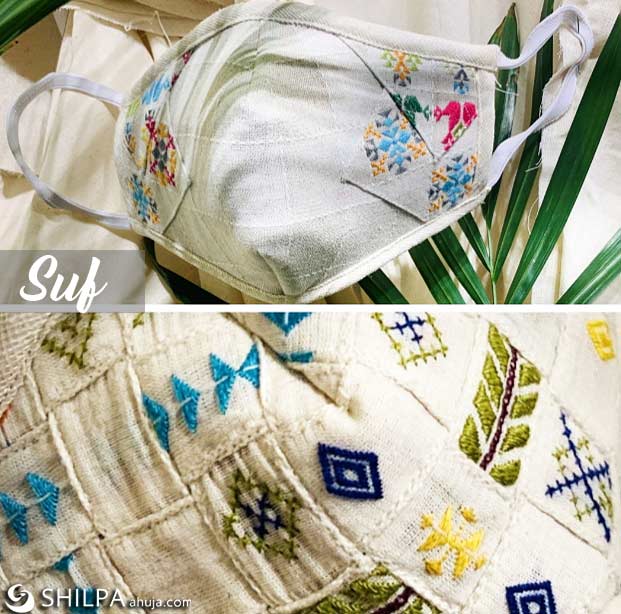
3. Gara Embroidery
Gara is a very rare craft of India which gives melodic expressions of nature on the fabric. A recent article by Outlook Traveller mentioned, “The Parsi Gara is a quintessence of embroidery, art, and history, and it has a Chinese link” in the 19th century when Indians used to trade to China and the silk route was popular at that time. It is a combination of Persian, Chinese, European, and Indian cultures in this embroidery. It came in India to Gujarat and Mumbai through Parsi communities, made and worn by them during special occasions.
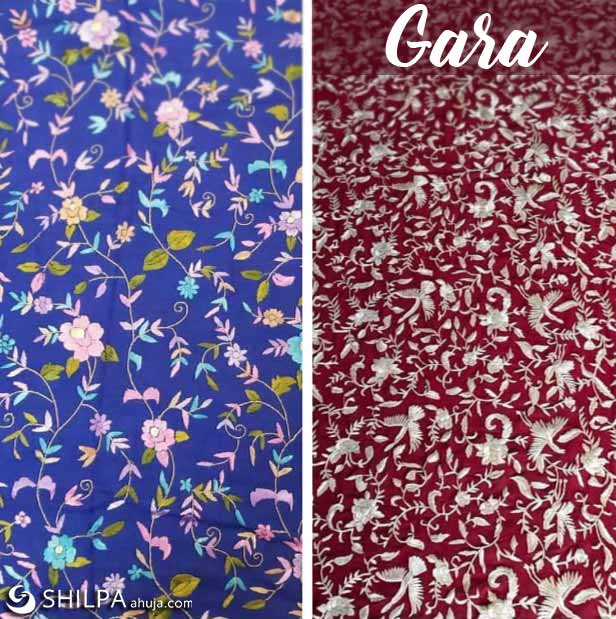
Moreover, it is now made on kurtas, footwear, purses, clutch, scarves, and many more. Designer Ashdeen Lilaowala has used Gara from rare to popular contemporary styles and revealed a dimension of this vintage art that is gracious, and trend-challenging in the recent outing at the last Lakme Fashion Week in both western and Indian silhouettes. Colorful pastel hues with motifs like creepers, leaves, peacocks, roses, lotuses, dragons, etc. are common in gara. Artists have incorporated zardozi embroidery with gold and silver zari threads in it to make their unique styles.
4. Kantha Embroidery
Kantha is one of the oldest folk art of India used to done by village women in their leisure time made from old, torn clothes in West Bengal. Origin traces are back to the ancient pre-Vedic age. They simply used running stitches with colorful threads.
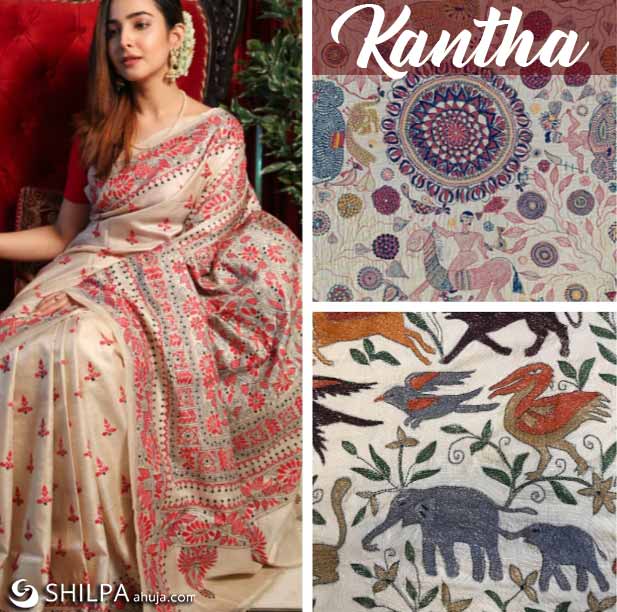
The Kantha embroidery is often used as a medium of cultural and religious importance under the influence of Hinduism. Mostly used on special occasions and festivals in the form of dupattas, sarees, quilts, and many more. Both simple and elegant at the same time! Designers like Farah Khan; Monapali and Sunita Shanker, have given Kantha a revived look and made innovations combining modern silhouettes. London based label Tiipoi has used Kantha in their products like cushion covers, and quilted blankets, etc.
There are different types of Indian surface works in this embroidery from Lep to Rumal Kantha based on its utility. Portuguese and European traditions have influenced their motifs. Motifs found in early Kantha embroidery include many symbols derived from ancient art such as the sun, the moon, the tree of life, and the universe. These traditional motifs can still found today as these symbols remain closely connected to nature and historic culture such as lotus, swastika, mythological scenes, etc. with contemporary colors.
5. Gota Work
Gota work is a beautifully done appliqué work in which gota (strips of golden, silver, and copper ribbons) are sewn on the fabric, either as borders or designed as buttis (small botanical patterns) inspired by natural elements for example flowers, leaves, birds. It originated in Rajasthan during the Mughal period and was also done in Gujarat.
It is used in everything from apparel to home decors. Mostly applied on hems as borders on ghagras, dupattas, and heavy bridal sarees. Elegant and eye-catching embroidery for special occasions, the gota-bordered sarees are quite trendy currently, with lehenga and suits.
Nowadays, the use of coated or polyester motifs called ‘Plastic Gota’ is also in trend. You can get products like household accessories, jhola bags, footwear, handbags, etc. in these types of Indian surface works. Designer Sukriti & Aakriti Grover, Anita Dongre, etc. have given the timeless appeal to this craft, combining it with modern silhouettes.
6. Dabka Work
We all love to dress like royals, don’t we? So, this is a type of Indian surface works that gives you a luxurious and elegant look, and that’s because dabka work adorned the fancy wear of Mughal royalty. Dabka is made with the help of coiled golden and silver thin wires that resemble spring zari threads, giving it a 3D appearance. We have seen these types of Indian surface works mostly in Rajasthan and Pakistan as it originated from those regions. For heavy intricate designs, a combination of Zardozi and Dabka work is often used.
Mostly done on bridal dresses, heavy saree borders, clutches, mojris (decorated leather shoes), heavy embellished blouses paired with plain saree, etc. Use of motifs like paisleys, flying birds, animals, peacocks, and many more. Sometimes high-skilled artisans also do knotting and braiding to give it a magnificent look.
7. Chikankari
Chikankari is a type of embroidery made with white cotton threads on fine, usually, white cotton fabric found in Lucknow. Embroidery is extremely intricate and delicate. It originated around 400 years ago as a mock-up for the expensive jamdani muslins in the Mughal period. Chikankari is said to have been introduced by Jahangir’s wife Noor Jahan inspired by Mughal and Persian architecture.
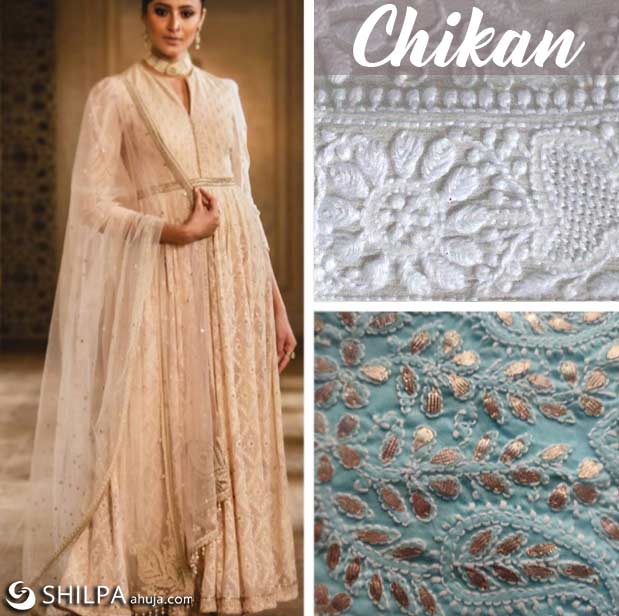
Not only for apparel, but Chikankari can also found on table linen, bedsheets, pillow covers, rugs, and so on. Many Indian designers like Tarun Tahiliani, Payal Singhal, etc. have given Chikankari a rebirth with modern silhouettes for both men and women in Indian wedding looks.
Chikan work is suitable for formal occasions with Chikankari kurta to wedding occasions with diamond-studded anarkali dress or lehenga. Six basic stitches combined with 40 different styles give it new patterns like Murri, Phanda (French Knots), to the most popular jaali work (Trellis), and Bakhiya (shadow stitch). Motifs based on nature such as flowers, paisleys, peacocks, etc are commonly used. Traditionally, it was only made on whites but nowadays it is available in all colors.
8. Zardozi Work
Another royal type of Indian surface work – Zardozi in which “zar” means gold, “dozi” means embroidery. Made using gold and silver (zari) threads and sometimes embellished with pearl studs and precious stones to give a princely look. Born in Persia, it came to the city of Lucknow, India through the Mughal Emperor Akbar and he used this work for garments as well as interiors, according to Strands of Silk. Ancient Indian texts like Ramayana and Mahabharata also mention zardozi work being used in kings’ attire, made from pure gold.
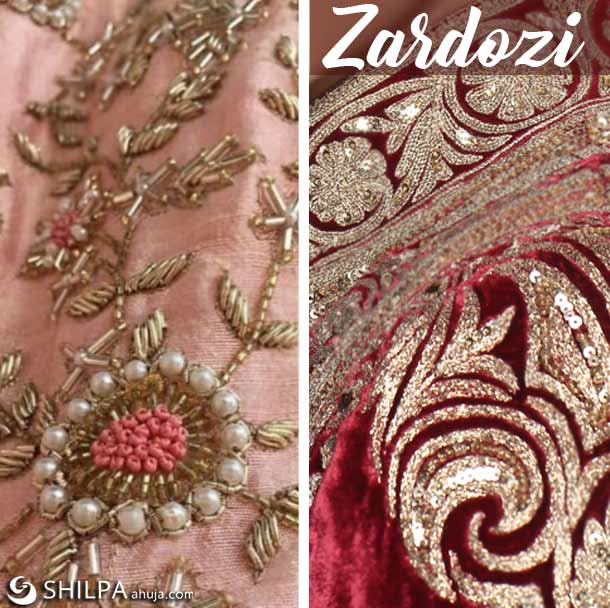
Many designers like Manish Malhotra, Sabyasachi, Suneet Varma, Tarun Tahiliani, Shyamal & Bhumika, etc. frequently use these types of Indian surface works in their collections. Motifs include peacocks, flowers, leaves, etc. Nowadays, It is mostly used on bridal lehengas, couture collections, gowns, clutches, mojris, etc. Heavy and beautiful but durable as well!
9. Kundan Work
Kundan is a rich and intricate type of Indian surface work where drop or leaf-shaped sequins are stuck onto the fabric, enclosed in gold and silver (zari) threads. Introduced in the Mughal era in Rajasthan and Gujarat regions around the 19th century, it is mostly used in heavy bridal sarees, lehengas, and accessories.
Not only fabrics but kundan-embellished accessories also have a huge market with gold and meenakari artworks, mostly during special occasions. Motifs are similar to zardozi giving a 3D appearance to the fabric. It is also seen in South Indian weddings in the bride’s attire. I personally love this look, mostly blouse of these types of Indian surface works paired with Kanjeevaram silk saree. Owing to the weight of all the sequins, sarees, and lehengas with kundan work tend to be quite heavy and are lined with another fabric like satin to support it.
10. Kasuti Work
Kasuti, “Kai” means hand, “Suti” means cotton, which means the handwork of cotton on fabric. Traditional folk embroidery practiced in the western Karnataka of Dharwad regions, it originated in the Chalukya period in the 15th century, according to Direct Create. Ilkal sarees, Dharwad sarees, Chandrakali black silk saree, Ravike or blouse, Angi or kurta are famous products of this embroidery.
From minimal motifs to very intricate motifs that were skilfully done in 64 art forms with bright colors and contrasting cotton threads. It is a combination of four embroidery stitches – Negi, Gavanthi, Murgi, and Menthi which can be done separately or as a combination of two. Motifs based on rangoli patterns, for example, sunflower, chariots, conch shells, shivlingas, pigeon, swastikas, and elephants are common. I would love to wear these sarees which are extremely lightweight while giving elegant look at the same time!
11. Phulkari
Next is Phulkari, where “Phul” means flower, and “Kari” means the artwork. It is traditionally, done by the women in the regions of Punjab. We have heard the famous Punjabi love story of Heer-Ranjha that mentions the first-ever documentation of this craft in the 18th century. Phulkari is used in both daily and occasional attire in form of dupattas, handbags, patiala suits, etc. Designers like Manish Malhotra and Kanika Goyal have used this artwork in their special fashion week collections.
Handspun embroidery has various colorful forms, like multicolored phulkari such as Satranga (seven-colored) and Panchranga (five-colored); Leheria (the waves); Dhoop Chawn literally meaning sunshine and shade (a combination of white and golden yellow); and many more. The embroidery gives it a rich mosaic-like effect with unique untwisted silk threads in bright colors and geometric patterns or floral motifs.
12. Kashida Embroidery
Kashida embroidery is made using thick colorful threads and sometimes beads to create different natural patterns, often paisley. It is done by men and originating in Kashmir, it was traditionally worn by the Mughal emperors. Mostly used in dau-shalos, pashmina shawls, jackets, sarees, upholstery, etc.
According to an article published in Vogue magazine, Tarun Tahiliani talked about his new bridal collection incorporating Kashida embroidery. He mentioned, “Kashida has been my big and growing story and continues to surprise me, but it has all the attributes that I love talking about. It is mouldable, it has color, it is weightless, it is versatile.”
Kashida or kashidakari has carved the beautiful essence of Kashmir with needlework in vibrant colored hues. There are other various types of Indian surface works in Kashmir such as Sozni work, a very fine intricate needlework; Aari or Crewel embroidery, which uses a hook to make floral-inspired motifs, building it with chain stitch around the fabric. Motifs used are mostly natural elements such as chinar leaf, vine, animals, flowers, creepers, lotus, mangoes, almonds, etc.
13. Chamba Rumal
Rumal literally means handkerchief in Hindi. Chamba rumal is a handicraft of embroidered handkerchief, originated in Chamba, Himachal Pradesh. According to The Better India, rulers of Chamba kingdom conserved this embroidery in the 18th and 19th centuries. Embroidered rumals were usually gifted on a daughter’s wedding, which was customary in Himachal Pradesh’s hills and valleys.
This beautifully done embroidery uses simple natural motifs for example trees, flowers, fruits, etc. in bright colors. It also features intricate motifs like mythological scenes, Raas-Leela, for example, hunting and wedding scenes. Both men and women use these rumals and shawls. Can you imagine the embroidery they did so perfectly, that both sides of the material are identical? For instance, they keep embroidered Rumals as a heritage for future generations and used in ceremonial presentations.
Indian Culture Preserved through Handicrafts
Types of Indian surface works have gained popularity not only in Indian markets but International markets as well. Handicrafts have gained more interest over time. Embroidery has also revived and the contemporary look ranges from bridal wear to casual wear, party wear to formal wear. Also, top designers like Anita Dongre, Tarun Tahiliani, Sabyasachi, etc are giving Indian essence to modern silhouettes.
These types of Indian surface works are one of the beautiful gifts the rich Indian culture has to offer. However, these traditional handiworks also tell the story of Indian history, from the picturesque valleys of Kashmir to the ornate kingsly apparel of Delhi’s Mughals and the nawabs of Lucknow.
Which do you like the most, and did I miss any? Let me know in the comment below. Also, share your pictures in outfits with different types of Indian surface works by tagging us on Instagram @shilpaahujadotcom.
Also read:
– Types of Surface Techniques & Apparel Hardware Items in Western Fashion
– Types of Silks in India
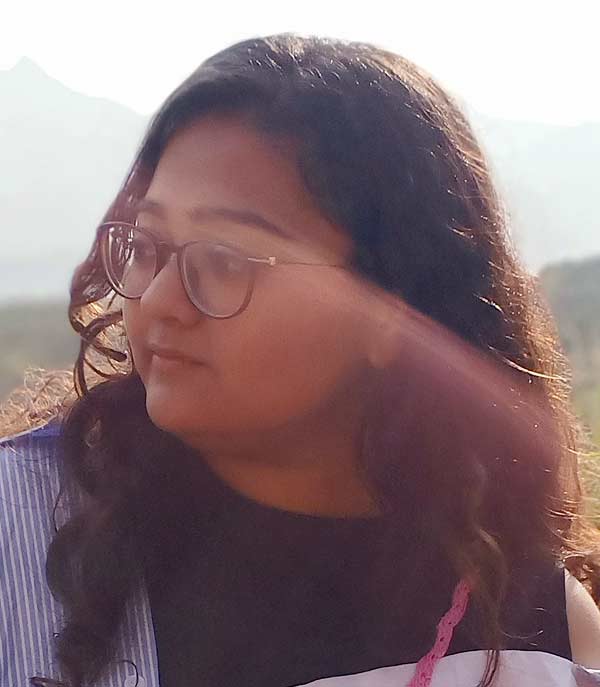
Aayushi is a Fashion Journalist Intern at ShilpaAhuja.com. She is pursuing a bachelor’s degree in Fashion Design from Amity University, Mumbai, and is originally from Gujarat. Prior to ShilpaAhuja.com, she worked in an NGO, Kala Raksha Museum, where she worked to promote age-old handicraft traditions. She has also done a diploma in Innovation Management. She loves fashion, music, and to explore new places of different cultures and traditions. Her dream is to become a fashion designer, and along with that she wants to work as a fashion journalist too. Her interests include learning embroidery techniques and graphic design.
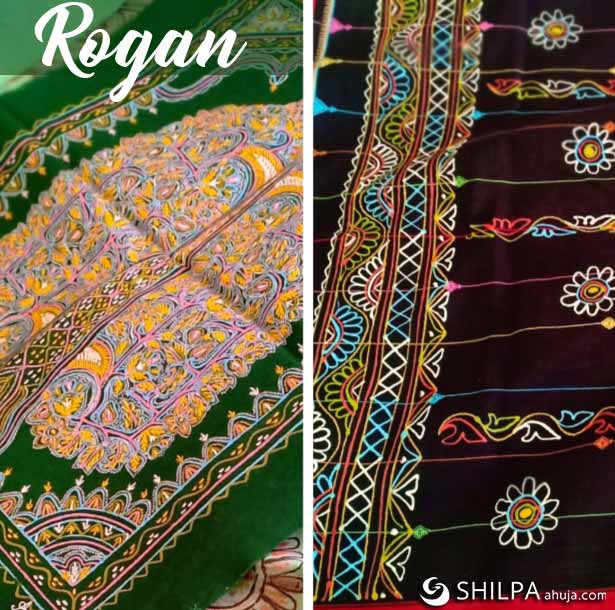
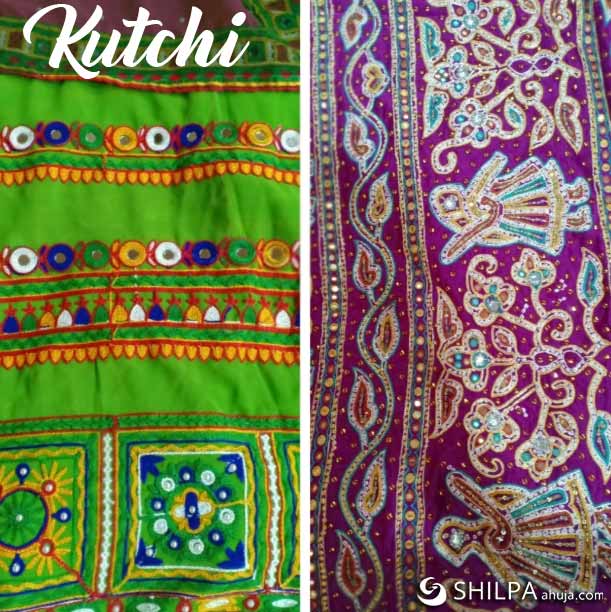
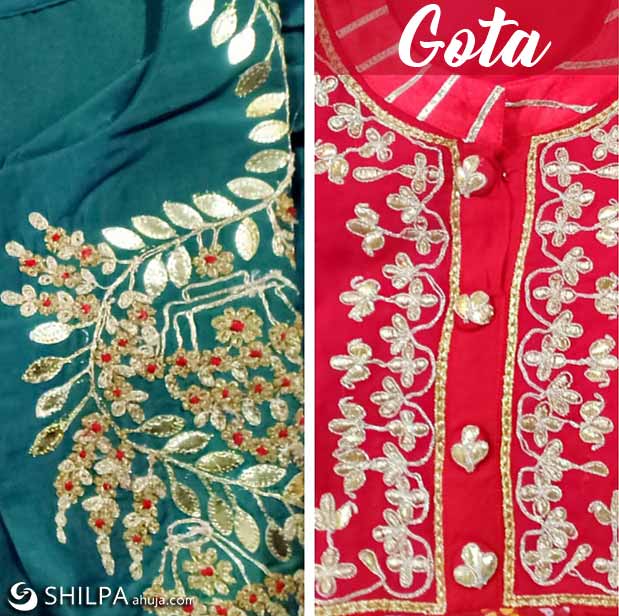
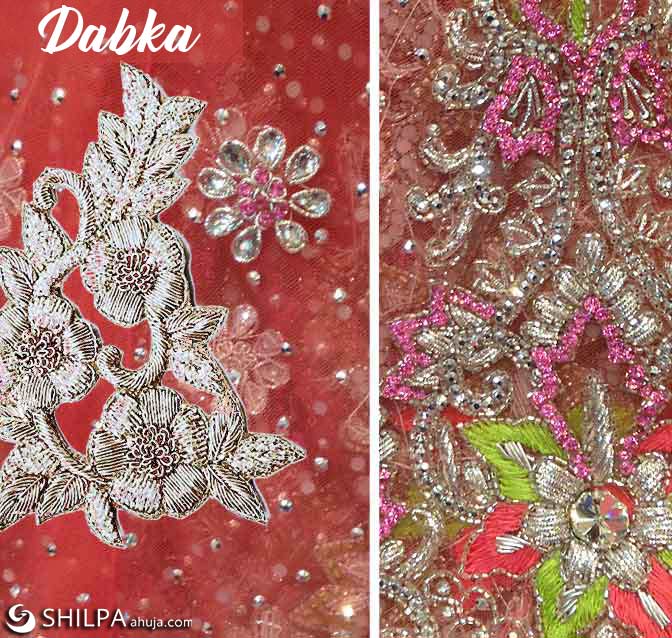
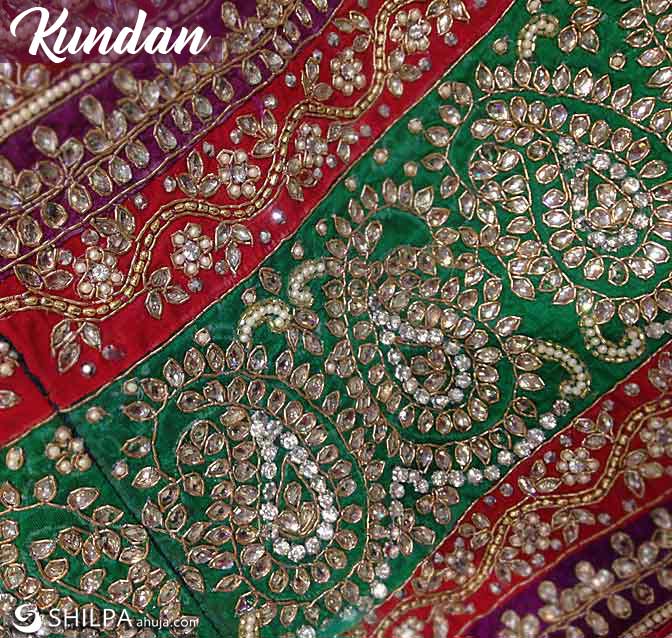
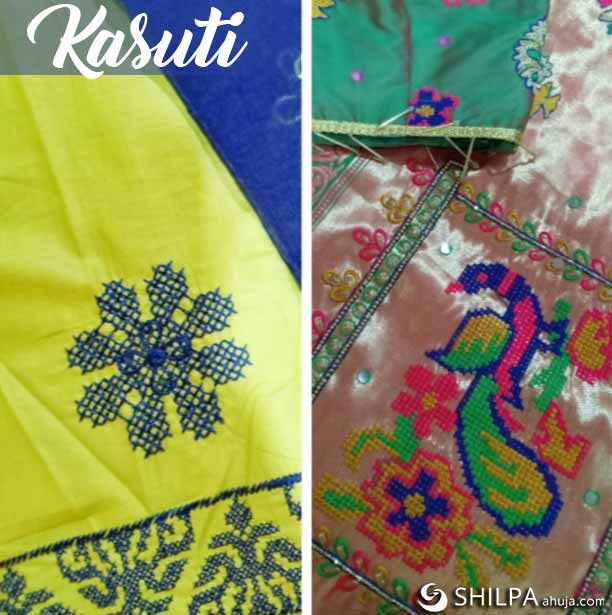
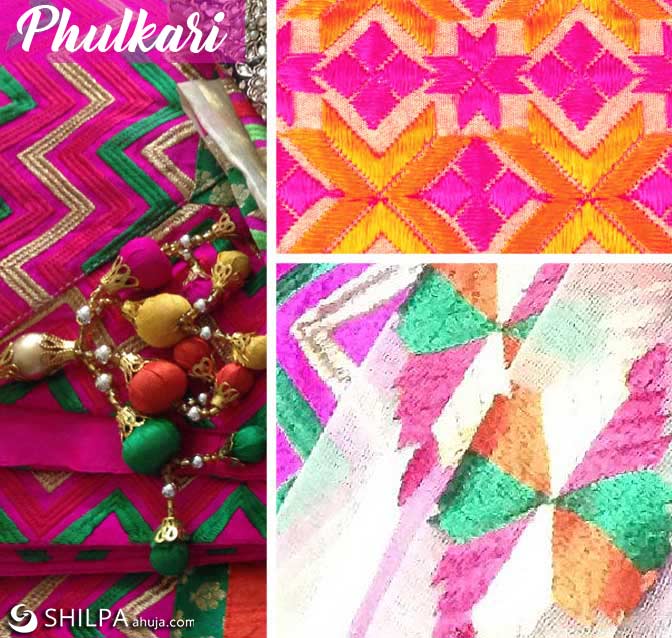
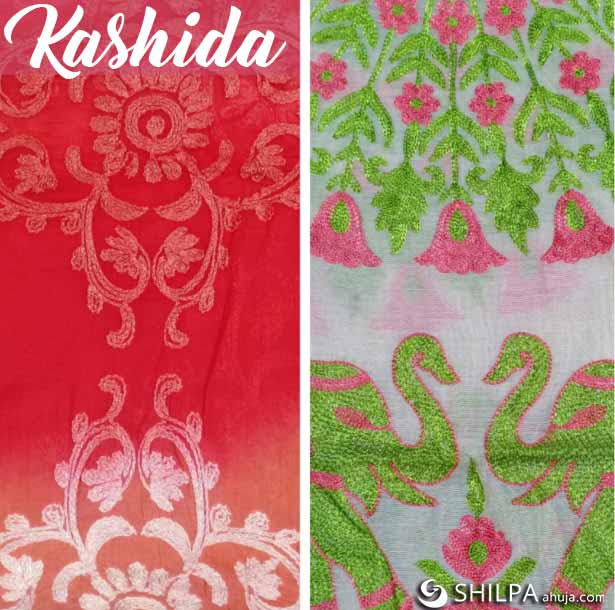
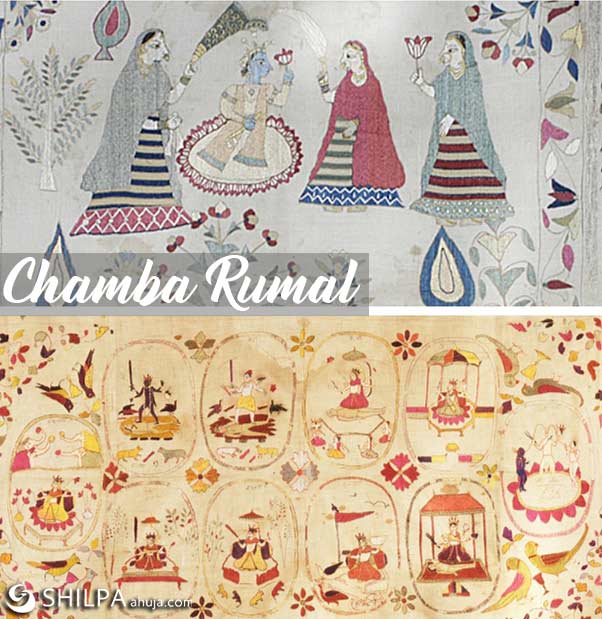
nice journal..
Awesome work, shilpa
I like your blog
Thanks
OMG, it is very very beautiful. Thank you for this valuable information